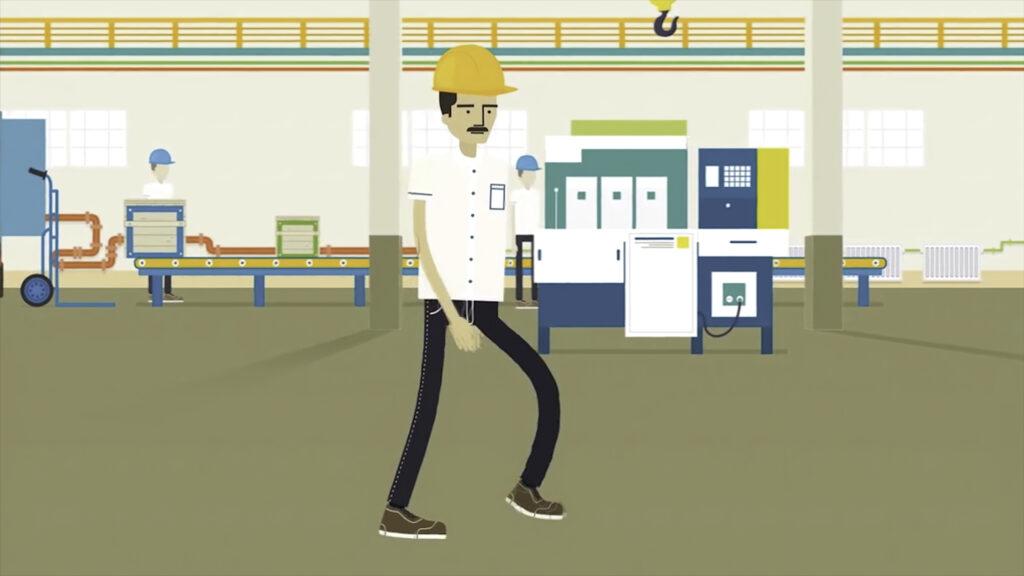In this digital age, online training videos have become an essential part of educational institutions and businesses alike. Video-based training provides a convenient and cost-effective way to deliver information to learners, and with the rise of video tutorials and educational videos, the demand for training videos online has only increased. However, creating effective training videos is not as simple as recording a lecture and posting it online. To make training videos impactful, engaging and memorable – animation plays a crucial role.
The role of animations in training videos is more than just adding some elements of entertainment. It has become an indispensable tool for creating interactive and effective learning experiences. Animated visuals, graphics, and characters can aid in conveying complex ideas and making them more understandable and fun. Additionally, animations can make training videos visually appealing and enhance the overall learning experience.
In this article, we explore the benefits of using animation in training videos. We will delve into how animation enhances visual appeal, increases knowledge retention, creates interactive learning experiences, and adapts to different learning styles. By the end of this article, you’ll have a solid understanding of how animation can amplify the impact of video training programs.
Enhancing Visual Appeal with Animation
Animation is a powerful tool that can add a lot of visual appeal to training videos. By incorporating animated graphics and characters into video-based training, it’s possible to create engaging visuals that capture the attention of learners. Not only does animation make training videos more visually appealing, it can also improve knowledge retention and convey complex ideas in a memorable way.
Animated graphics can be used to illustrate concepts that might be difficult to explain verbally or through text. For example, an animation can show how a machine works, how a process is completed, or the steps of a complex task. It can help learners see how individual pieces fit together and gain a better understanding of the overall process.
Animated characters can also be used to add a layer of engagement to training videos. Instead of watching a dry lecture, learners can watch a cartoon character that embodies the topic being discussed. They become invested in the character and the story, making the learning experience more enjoyable and effective.
Overall, animation in training videos is a creative way to enhance visual appeal, making the video-based training experience more enjoyable and memorable. Animated graphics and characters can convey complex ideas in a way that is easy to understand and fun to watch.
Animated graphics
Animated graphics can be used to illustrate concepts that might be difficult to explain verbally or through text. For example, an animation can show how a machine works, how a process is completed, or the steps of a complex task. It can help learners see how individual pieces fit together and gain a better understanding of the overall process.
Animated characters can also be used to add a layer of engagement to training videos. Instead of watching a dry lecture, learners can watch a cartoon character that embodies the topic being discussed. They become invested in the character and the story, making the learning experience more enjoyable and effective.
“Animation in training videos can make the learning experience more enjoyable and effective.”
Visual Appeal
Animated graphics and characters add to the overall visual appeal of training videos. They make the video more dynamic and interesting, which can keep learners engaged and focused. The use of animation can also help break up long sections of text or a monotone speaker.
Additionally, animation can make training videos more accessible. It allows for the use of color, imagery, and movement to convey meaning, which can be especially helpful for learners with visual or auditory challenges.
Overall, animation in training videos plays a vital role in creating an engaging and visually appealing learning experience.
Increasing Knowledge Retention with Animation
Animation is an effective tool for increasing knowledge retention in learners. Memorable visuals and animation for knowledge retention can make complex concepts easier to understand and remember. Animated storytelling is an excellent way to convey information in a memorable way, which helps learners retain information for longer periods.
Research indicates that people remember only 10% of what they hear and 20% of what they read. However, when information is accompanied by visuals, retention can increase up to 80%. Therefore, it is essential to utilize animation in video-based training to enhance knowledge retention.
“Animation is excellent for knowledge retention as it creates memorable visuals that aid in conceptualization. Additionally, the use of storytelling in animation brings information to life in a way that engages audiences, increasing their ability to retain knowledge.”
Animated visuals can also help learners understand complex concepts by breaking them down into smaller, more manageable parts. Animated visuals can show relationships between concepts and illustrate processes in a way that static images or text cannot. As a result, learners can retain more information, leading to better performance and a better learning experience.
Moreover, animation can be used to illustrate real-world scenarios, providing learners with a tangible connection to what they are learning. This connection can make the learning experience more meaningful and memorable, leading to increased knowledge retention.
In conclusion, animation is an effective tool for increasing knowledge retention in learners. The use of memorable visuals, animated storytelling, and real-world scenarios can create a more engaging and impactful learning experience. Incorporating animation for knowledge retention into video-based training programs can lead to better knowledge retention and an overall better learning outcome.
Creating Interactive Learning Experiences
One of the biggest advantages of using animation in training videos is the ability to create interactive learning experiences. These types of videos provide learners with a more engaging and immersive experience, which can facilitate better knowledge retention and comprehension.
Interactive training videos allow learners to actively participate in the learning process, rather than just passively watching a video. This approach fosters learner engagement, which can lead to better learning outcomes. By incorporating interactive elements such as clickable animations or interactive quizzes, learners can test their knowledge and receive immediate feedback, which can reinforce their understanding of the material.
Interactive animations are particularly effective in holding learners’ attention and providing them with a more engaging experience. For example, an animation that allows learners to control the speed and direction can empower learners with a sense of control over the learning process. This approach makes them feel like active participants rather than passive viewers.
Another interactive element frequently used in training videos is interactive quizzes. These quizzes allow learners to test their knowledge of the material and receive immediate feedback. This approach can reinforce their learning and provide them with a sense of accomplishment, making the learning experience more enjoyable.
In summary, using animation to create interactive learning experiences in training videos has proven to be an effective way to increase learner engagement, improve knowledge retention, and create more impactful learning experiences.
Adapting to Different Learning Styles
Animation is an effective tool for catering to different learning styles, such as visual, auditory, and kinesthetic learners.
Visual learners benefit from animated visuals in training videos. The use of animated graphics, diagrams, and charts can help to simplify complex concepts and make them easier to understand. At the same time, the use of color, contrast, and movement can help to maintain the learner’s attention.
For auditory learners, voice-over narration is an effective way to convey information. This can be paired with animated visuals to enhance understanding and retention. Additionally, sound effects and music can be incorporated into training videos to create a more immersive learning experience.
Kinesthetic learners benefit from interactive elements in training videos. Clickable animations and interactive quizzes engage learners in an active learning experience. The ability to pause, rewind, or replay sections also allows learners to learn at their own pace and in the way that suits them best.
Conclusion:
Animation helps to create engaging and effective training videos that cater to different learning styles. By using animated visuals, voice-over narration, interactive elements, and customizable playback options, trainers can create an immersive and effective learning experience. Incorporating animation into training videos can help learners to retain information better, increase engagement, and achieve learning outcomes.
Conclusion
In conclusion, animation plays a crucial role in creating effective training videos that engage learners and maximize knowledge retention. By enhancing the visual appeal of training videos, animation provides an engaging and memorable learning experience that ensures learners retain the information presented to them.
Moreover, animation facilitates interactive learning experiences that promote active participation and reinforce learning outcomes. With the ability to adapt to different learning styles, animation can cater to the needs of visual, auditory, and kinesthetic learners alike, making training videos effective for a wide audience.
Training videos are an essential part of modern organizational training strategies, and incorporating animation can significantly improve their impact and effectiveness. By creating engaging and informative training videos, organizations can ensure that their employees receive the knowledge and skills necessary to succeed in their roles.
FAQ
What are training videos?
Training videos are instructional videos that are designed to teach a specific skill or provide knowledge on a particular topic. They are typically used for online training courses, video tutorials, and educational purposes.
Why is animation important in training videos?
Animation is important in training videos because it enhances the visual appeal and engagement of the content. Animated graphics and characters can make the videos more interesting and help learners retain information better.
How does animation enhance the visual appeal of training videos?
Animation adds visual appeal to training videos by using engaging visuals, such as animated graphics and characters. These visuals make the videos more visually interesting and captivating for the learners.
Can animation help increase knowledge retention in training videos?
Yes, animation can increase knowledge retention in training videos. Memorable visuals created through animation can make complex concepts easier to understand and remember by the learners.
Are there interactive elements in training videos facilitated by animation?
Yes, animation can create interactive learning experiences in training videos. Interactive elements like quizzes and clickable animations can enhance learner engagement and make the learning experience more active and participatory.
How does animation cater to different learning styles?
Animation caters to different learning styles by providing visual learners with engaging visuals, auditory learners with voice-over narration, and kinesthetic learners with interactive elements in training videos.

